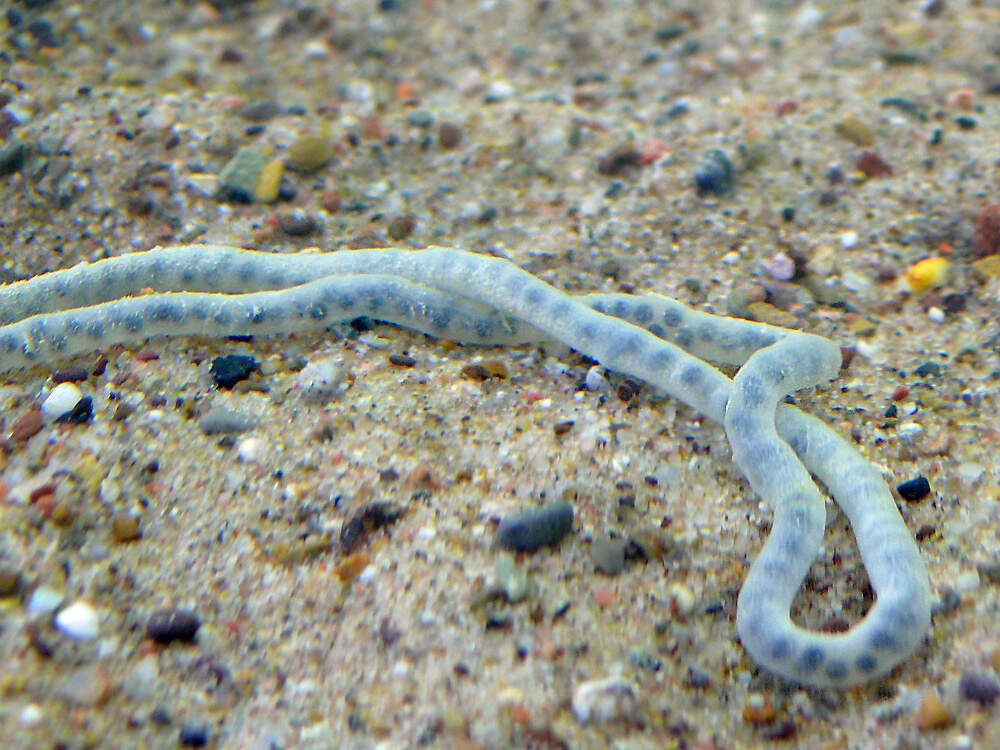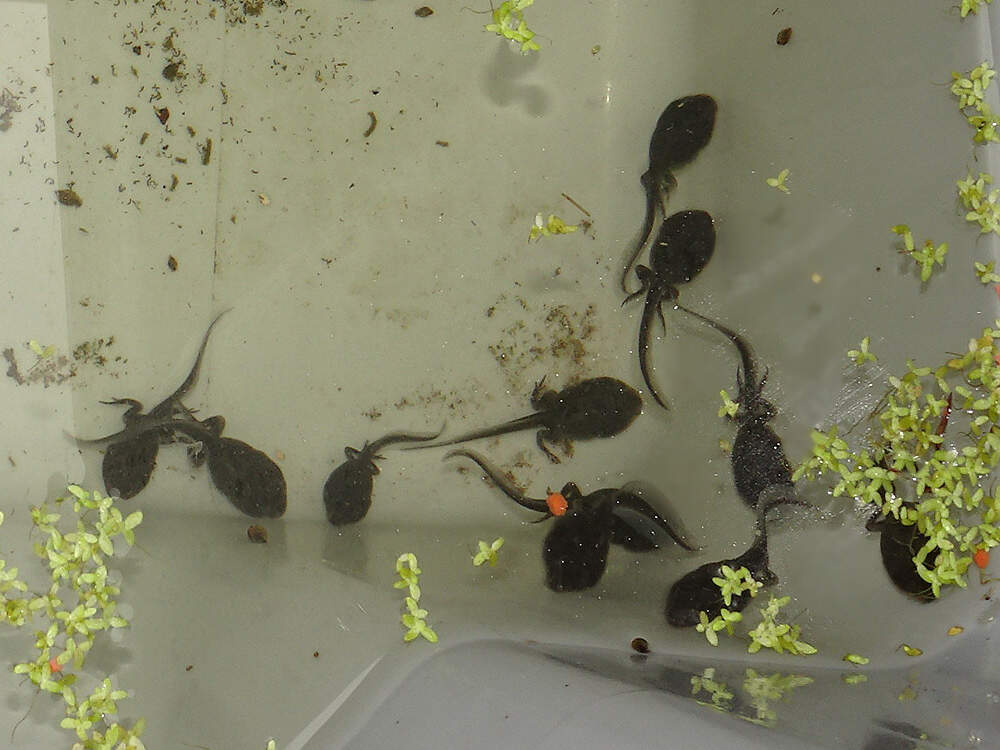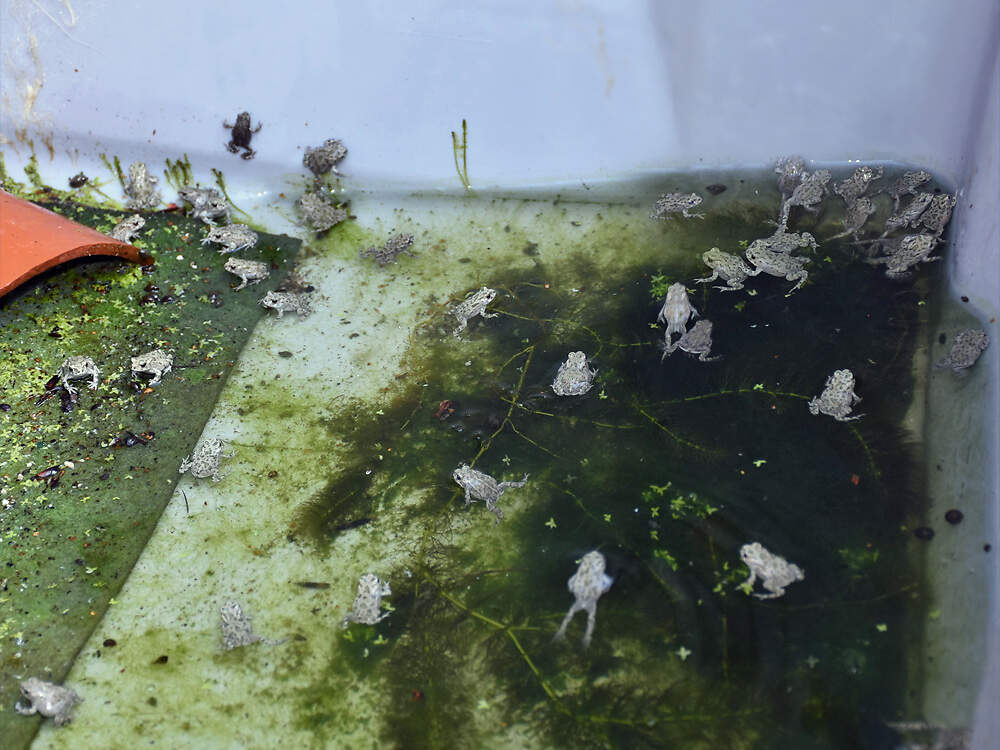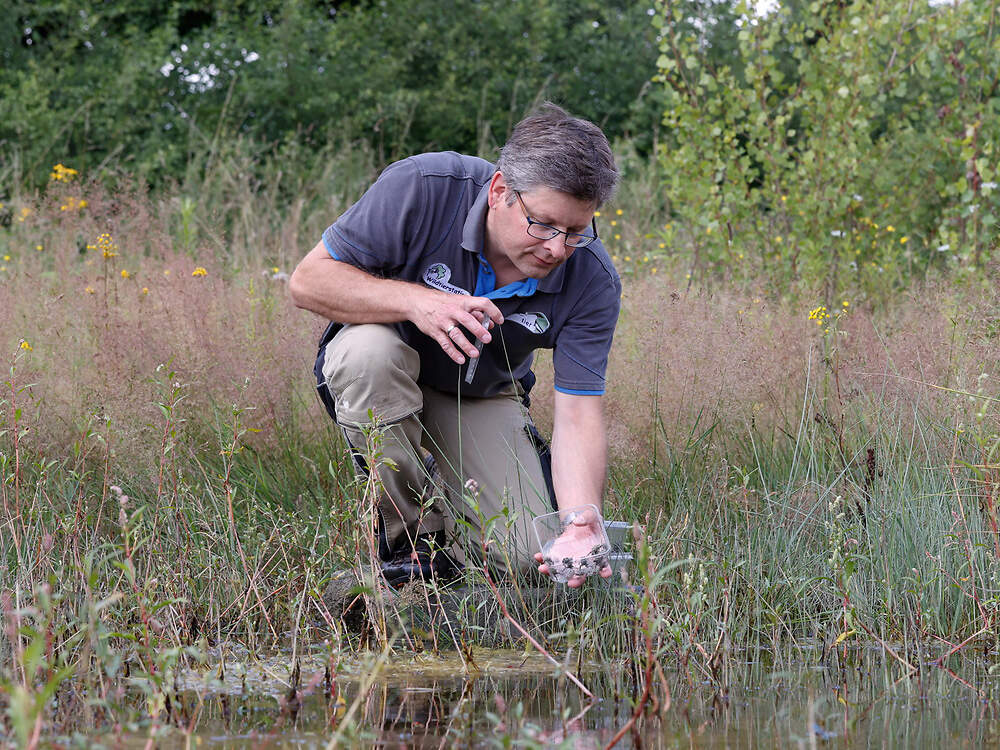ABÁIGAR, T., YOUM, B., NIAGA , M., ENSENYAT, C. & CANO, M. (2009)
The role of Senegal in the recovery of the Sahelo-Saharan antelope species: The case of the reintroduction of Dorcas Gazelle.
GNUSLETTER 28(1): 6-8.
Abstract:
Abstract. During the last 25 years Senegal made a significant effort to recover the three sahelo Saharan species which disappeared from its sahelian region: the scimitar-horned oryx (Oryx dammah), the mhorr gazelle (Gazella dama mhorr) and the dorcas gazelle (G. dorcas). With this purpose, the Senegalese government created two fauna reserves: the Guembeul Reserve and the Ferlo North Reserve. The mhorr gazelle was reintroduced in 1984 and the scimitar-horned oryx in 1999. The reintroduction of dorcas gazelles started in April 2007 with a project conceived to be carried out in three phases: phase 1) translocation of 20 gazelles (6.14) from the captive global population living in several zoological institutions in Europe to the Guembeul Reserve, phase 2) acclimtation to the new environmental and management conditions and growing of population under genetic control, and phase 3) translocation of part of the gazelles from the Guembeul Special Fauna Reserve to the North Ferlo Fauna Reserve and genetic reinforcement of the reintroduced population. After 14 months of the reintroduction, the gazelles are well adapted to the new conditions and now number 31 gazelles (9.22). To assure the success of the reintroduction project, other actions related with training and education of local people were carried out.
abaigar-biblio
WILKINS, K., PEJCHAR, L. & GARVOILLE, R. (2019)
Ecological and social consequences of bison reintroduction in Colorado.
Conservation Science and Pracfice 1(2). DOI: 10.1002/csp2.9.
Abstract:
Bison were instrumental in shaping North America's Great Plains. Interest in restoring this iconic species and their ecological role in grassland ecosystems is rapidly gaining momentum. To evaluate the potential for bison to enhance habitat quality for wildlife and catalyze public engagement in grassland conservation, we assessed both the ecological and social effects of a recent bison reintroduction (2015) to northern Colorado. Specifically, we explored the effect of bison reintroduction on: (a) bird density and habitat use, (b) mammal habitat use, (c) vegetation composition and structure, and (d) visitor connectedness, known as place attachment, to a shortgrass prairie. We predicted that bison reintroduction would reduce cover and height of some grasses and shrubs, which would increase density and habitat use for obligate shortgrass prairie birds, and increase habitat use for coyote and lagomorphs. In addition, we predicted that visitors would express stronger place attachment to this grassland once bison were reintroduced. To measure ecological and social responses, we surveyed birds, mammals, and plants; and conducted structured visitor surveys before and after bison reintroduction. We found few short-term effects of bison on grassland bird density and habitat use, mammal habitat use, and vegetation composition and structure. However, we measured a significant increase in visitor place attachment to the grassland site 1 year after bison reintroduction. Our results suggest that a new bison reintroduction may have immediate positive benefits for connecting people to conservation, and that the ecological and social effects may unfold over different time scales. We recommend that future bison reintroduction efforts monitor ecological and social outcomes to advance reintroduction biology.
wilkins-biblio
CHENG, Z. et al. (2012).
Reintroduction, distribution, population dynamics and conservation of a species formerly extinct in the wild: A review of thirty-five years of successful Milu (Elaphurus davidianus) reintroduction in China.
Global Ecology and Conservation 31: https://doi.org/10.1016/j.gecco.2021.e01860
Abstract:
Reintroduction plays a vital role in conservation for many endangered species, however, little long-term information is available on the population dynamics and conservation status. Here we provide a detailed account of the Chinese Milu (Elaphurus davidianus) conservation and reintroduction efforts over the past 35 years, and give updated information on current Milu distribution, population dynamics and conservation status based on long-term monitoring (1985–2020) and a detailed follow-up investigation (2013–2020) in 235 wildlife institutions throughout China. Milu conservation in China comprised three phases: i) establishing ex situ populations and increasing the number of Milu through captive breeding (1985–1992); ii) preparing captive Milu for life in the wild and establishing in situ conservation populations (1993–1997); and iii) reintroduction of Milu into the wild throughout their historic range (1998–ongoing). Currently, there are ca. 9062 Milu (including 2825 wild individuals) distributed across 83 sites with 7380 individuals living at Beijing Milu Park, Jiangsu Dafeng Milu Nature Reserve and Hubei Shishou Milu Nature Reserve. The average birth rates in three sites were all over 0.200, and the average adult mortality rates were below 0.085, resulting in a rapid population growth. We discuss a variety of factors that contributed to ex situ conservation success in the reintroduction of a species formerly extinct in the wild, and highlight past and present challenges of Milu conservation in China. Our results will provide helpful information on conservation and reintroduction for other endangered species around the world.
cheng-biblio
DOLLINGER, P. (2021)
Rückkehr in die Alpen - Wie Alpensteinbock, Bartgeier und Waldrapp wiederangesiedelt wurden.
Artenrettung 2021 (1): 52-70
Einleitung:
Tierrechtler und andere Zoogegner, welche die Artenschutzleistung der Zoos kleinreden wollen, verweisen immer wieder darauf, dass die Zoos nur «Anteil an der Wiederansiedlung von etwa einem Dutzend zuvor in der Wildnis ausgestorbener Arten» gehabt hätten und «nur einmal pro Jahrzehnt irgendwo auf Erden eine ausgestorbene Art wieder angesiedelt» werde 24. Dies ist falsch, denn von den rund 60, gegenwärtig oder früher in der Roten Liste der Weltnaturschutzorganisation IUCN der Kategorie «Extinct in the Wild» zugeordneten Tierarten konnten 30 wiederangesiedelt werden. Die meisten davon im Verlauf der letzten 30 Jahre durch oder unter Mitwirkung von Zoos. Wenn man dann noch jene Tierarten berücksichtigt, die regional ausgestorben waren und mit Hilfe der Zoos in Teilen ihres ursprünglichen Verbreitungsgebiets wiederangesiedelt werden konnten, sprechen wir von mehreren hundert Arten, Stützungen lokal bedrängter Bestände nicht mitgezählt. Von diesen regional ausgestorbenen Arten wären mit Sicherheit einige vollständig ausgestorben, hätte man nicht rechtzeitig ex situ-Schutzmaßnahmen zur Anwendung gebracht.
In diesem Artikel sollen die Bemühungen zur Wiederansiedlung von drei Arten im Alpenraum vorgestellt werden, nämlich die erfolgreichen Wiedereinbürgerungen von Steinbock und Bartgeier sowie die noch laufenden Versuche, den Waldrapp wieder heimisch zu machen.
dollinger-biblio
SCHREIBER, A., MONTADERT, M. (Hrsg., 2019).
Westliches Haselhuhn. Biologie, Status und Perspektiven einer Erhaltungszucht.
Neustadt (Weinstraße), POLLICHIA. ISBN: 978-3-925754-64-7.
Volltext: https://www.zobodat.at/pdf/Mitt-Pollichia_SB_2019_0001-0232.pdf
Einleitung zu den Schlussfolgerungen:
Die Abschlussdiskussion des Symposiums am 3.12.2017 behandelte vier Themen zum Problemkreis „Erhaltungszucht als Baustein eines Artenhilfsprogramms für das Westliche Haselhuhn“. Vor deren nachstehender Zusammenfassung sei betont, dass weitere Aspekte des Schutzes des Westlichen Haselhuhns nur am Rande Gegenstand dieser Tagung oder der Diskussion waren, etwa Schutzmaßnahmen im Freiland oder die Frage nach der notwendigen Validierung gemeldeter Nachweise dieser schwierig zu kartierenden Art. Dennoch sind natürlich verlässliche und stimmige Nachweisdaten relevant, um Gründerindividuen (oder Gelege) zum Einrichten eines Zuchtprogramms zu finden.
schreiber-biblio
BASTIAN, A. & BASTIAN, H.-V. (2020)
Vor 15 Jahren in der Natur ausgestorben: Ist der Balistar heute gerettet ?
Der Falke - Journal für Vogelbeobachter 67(3): 20-25.
Volltext: Herunterladen von https://www.researchgate.net/publication/342865117_Vor_15_Jahren_in_der_Natur_ausgestorben_Ist_der_Balistar_heute_gerettet
Headline:
Für die meisten ist Bali der Inbegriff einer Touristeninsel und nur für wenige Vogelenthusiasten eine bevorzugte Destination in Indonesien. Zwar ist die Avifauna für Europäer auch hier bunt und spektakulär, aber – für indonesische Verhältnisse – finden sich auf Bali beispielsweise kaum Endemiten. Hier gibt es nur eine endemische Vogelart, ja sogar nur eine endemische Wirbeltierart – den Balistar. Diese charismatische Vogelart hat aber eine ganz besondere Geschichte. Vor 110 Jahren entdeckt, war die Art vor gar nicht so langer Zeit quasi ausgestorben. Man streitet sich und wird es nie abschließend beantworten können, ob noch ein paar wenige Exemplare in ihrem natürlichen Lebensraum im West Bali Nationalpark überlebten oder nicht.
bastian-biblio
MOLINARI-JOBIN, A. & MOLINARI, P. (2021)
Die Rückkehr des Bären in die Alpen.
FAUNA FOCUS 72: 1-12. Erhältlich auf www.wildtier.ch/shop.
Einleitung:
In den Alpen fast ausgestorben, macht der Bär heute wieder von sich reden. Vor 20 Jahren wurde er im Trentino wiederangesiedelt. Die anfängliche Begeisterung kippt jedoch zunehmend. Obschon die Mehrheit der Bären und Menschen friedlich zusammenleben, haben einzelne Bärinnen, die ihre Jungen verteidigten, diesen Meinungsumschwung provoziert. Deswegen braucht es klare Richtlinien, wie mit Problembären umzugehen ist; diese sind mit der lokalen Bevölkerung und Interessensvertretern abzusprechen.
Nebst der abnehmenden Sympathie in der Bevölkerung ist auch die Inzucht problematisch. Damit die Bären in den Zentralalpen überleben können, sollten sie mit der dinarischen Bärenpopulation verbunden sein.
molinari-biblio
ISMAIL, A., RAHMAN, F. (2016)
Current Status of the Milky Stork Re-introduction Programme in Malaysia and Its Challenges.
Trop Life Sci Res. 27(2): 13–24. doi: 10.21315/tlsr2016.27.2.2
Abstract:
This review discussed the current status of the Milky Stork Re-introduction Programme in Malaysia and the challenges it faced. Although it has continued for almost seven years, more challenges appeared as time elapsed mainly due to the arising conflicts between the implementation of conservation policy versus the development projects in Kuala Gula. Hence, the released population is struggling to adapt mainly due to the reduction of suitable habitat for nesting and disturbed foraging areas by the continuous anthropogenic activities. Furthermore, the lack of appropriate training among captive storks prior to being released also slows the adaptation of the birds in their new habitat. The increasing pattern of pollution in the area is also highlighted. Several suggestions were given to help improve the current re-introduction programme. These include improvements to the captive training method, improvement of the existing enclosure’s condition and environment, protection of remaining mangrove forest, creation of a buffer zone to mitigate the increasing pollution level in the area, close monitoring of the released population, and maintaining continuous support and awareness among the public. Considering the ongoing anthropogenic activities that may impair the status of Kuala Gula as an important bird sanctuary, emphasis should be given to achieve sustainable development throughout the area.
ismail-biblio
ISMAIL, A., RAHMAN, F., KIN, D. K. S., RAMLI, M. N. H. & NGAH, M. (2011)
Current Status of the Milky Stork Captive Breeding Program in Zoo Negara and its Importance to the Stork Population in Malaysia.
Tropical Natural History 11(1): 75-80.
Auszug:
The Malaysian government has the intention to increase the Milky Stork numbers and to this end several actions have been taken, such as a Milky Stork captive breeding and reintroduction program. With the support from both government and non-government agencies the first actual captive breeding and reintroduction program was done between 1998 and 2004 in Kuala Selangor Nature Park. The effort however had failed due to several problems and constraints. The program continues today in Kuala Gula, Perak. Before such initiative was taken, the captive breeding program in Zoo Negara was given less priority in solving the Milky Stork issue. After the first reintroduction in Kuala Selangor Zoo Negara focusses on the captive breeding for conservation purposes. This paper aims to analyse and report the Milky Stork breeding program in Zoo Negara and its success.
ismail-biblio
WASS Sachsenhagen: Bestandsstützung Wechselkröte
Aufzucht und Wiederansiedlung von Wechselkröten durch die Wildtier- und Artenschutzstation Sachsenhagen
Literatur und Internetquellen
- NESSMANN, M. (2020) Wechselkröten (Bufo viridis) - die letzten ihrer Art in Niedersachsen. Poster DGHT-Tagung 2020.
- ÖNSA - Pressemitteilung vom 27.08.2019.
- WILDTIER- UND ARTENSCHUTZSTATION SACHSENHAGEN
Zurück zu Schutz für heimische Amphibien





